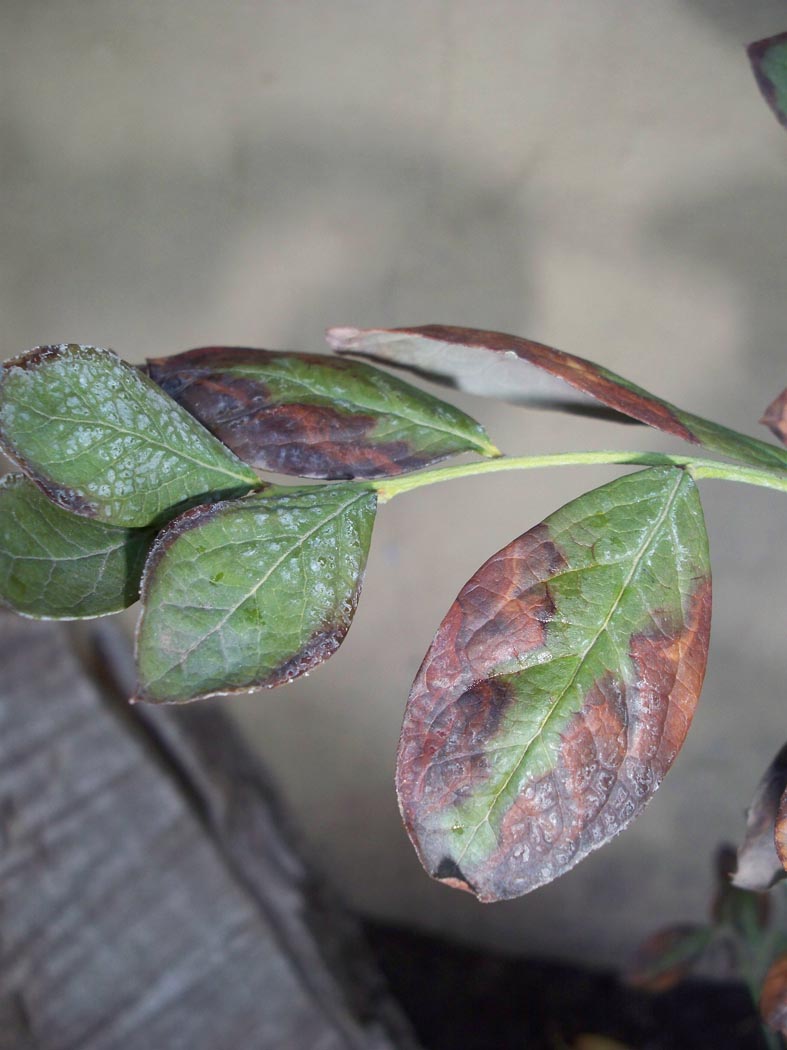
Burning Or Leaf Scorching
Xylella Fastidiosa
Pathogen:
Bacterium
Type:
Risk:
CRITICAL




DESCRIPTION
Pathogen description
Xylella fastidiosa is a phytopathogenic bacteria that affects a wide range of plants, including blueberry. This bacteria multiplies in the xylem, the water and nutrient conducting vessels of plants. It is transmitted mainly by insect vectors, such as leafhoppers, which feed on xylem fluid. When these insects feed on an infected plant, they ingest the bacteria, which then multiplies in their mouthparts. By feeding again on a healthy plant, the insect vector introduces the bacteria into the xylem of the new plant, thus beginning the infection. Within the xylem, Xylella fastidiosa reproduces rapidly, forming biofilms that obstruct the flow of water and nutrients, causing symptoms of water stress and dieback of plant tissues. This obstruction and the consequent vascular damage are the main mechanisms of pathogenicity of Xylella fastidiosa.
Disease description
The disease known as scorch or leaf scorch in blueberry, caused by Xylella fastidiosa, is characterized by mainly affecting the vascular system of the plant, resulting in a series of symptoms that reflect a severe deficiency in the translocation of water and nutrients. These symptoms include:
- Wilting of leaves, especially on the edges.
- Chlorosis and leaf necrosis.
- Premature defoliation.
- Reduction in the growth of new shoots.
- Regressive death of branches.
- Fruits of smaller size and quality.
- General decay of the plant.

TEMPERATURE AND HUMIDITY
25°C - 30°C
60% - 80%

VOIES DE TRANSMISSION
Insect vectors, Contaminated tools, Infected plants, Contaminated propagation material

Chemical treatments
CONTROL
There are no effective treatments against this pest. It is recommended to remove infected plants and nearby plants to prevent spread. As well as putting measures to control insect vectors.
Treatments authorized in organic farming
There are no effective treatments against this pest. It is recommended to remove infected plants and nearby plants to prevent spread. As well as putting measures to control insect vectors.
Biological control
-
Preventive treatments
There are no effective treatments against this pest. It is recommended to remove infected plants and nearby plants to prevent spread. As well as putting measures to control insect vectors.
- Implement rigorous monitoring of insect vectors and control their populations through traps and applications of selective insecticides.
- Use blueberry varieties resistant or tolerant to Xylella fastidiosa infection.
- Carry out sanitary pruning to eliminate and destroy affected parts of the plants.
- Avoid using contaminated tools and regularly disinfect pruning equipment.
- Promote crop diversification to reduce the prevalence of specific vectors.
- Maintain an adequate nutrition program to strengthen the natural resistance of plants.
- Implement physical barriers, such as mesh, to protect crops from the entry of vectors.
- Promote biological control through the introduction of natural enemies of insect vectors.
- Apply phytosanitary treatments preventively in times of high incidence of vectors.
- Carry out crop rotations and avoid dense plantings to improve air circulation and reduce excessive humidity.
Recommendations
*The recommended treatments are recommendations based on the authorities' databases and do not replace in any way the guidelines established by the legislation of each country.





